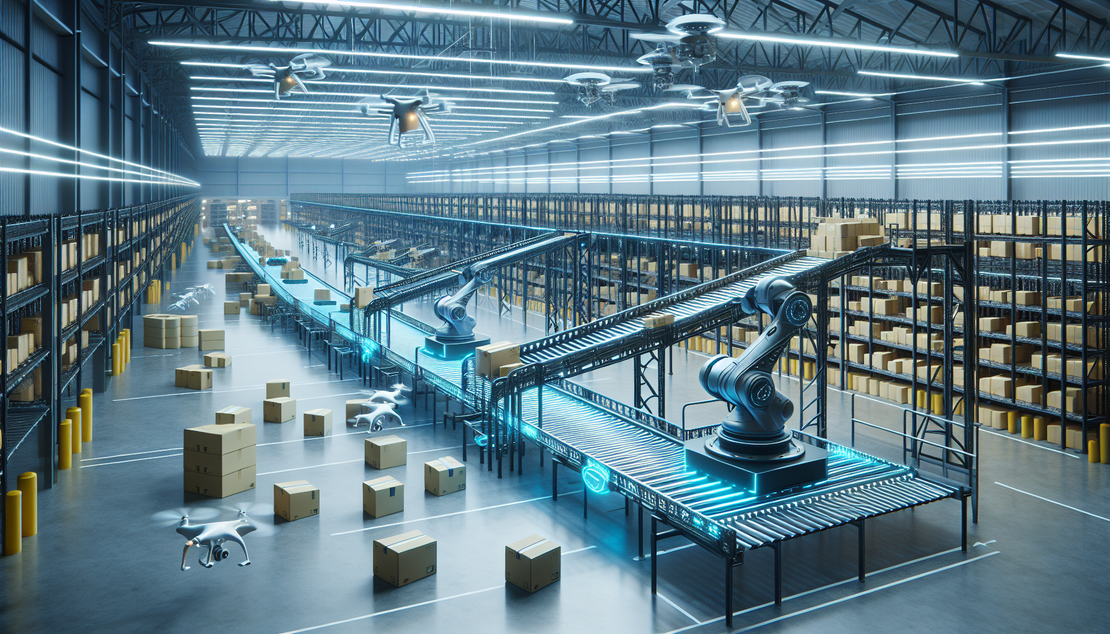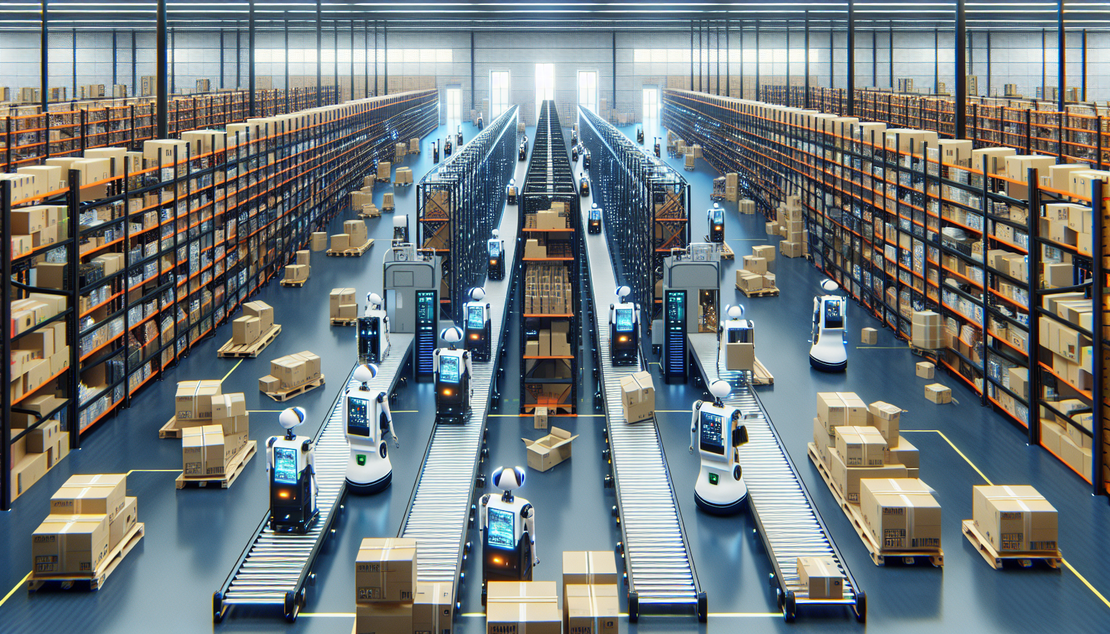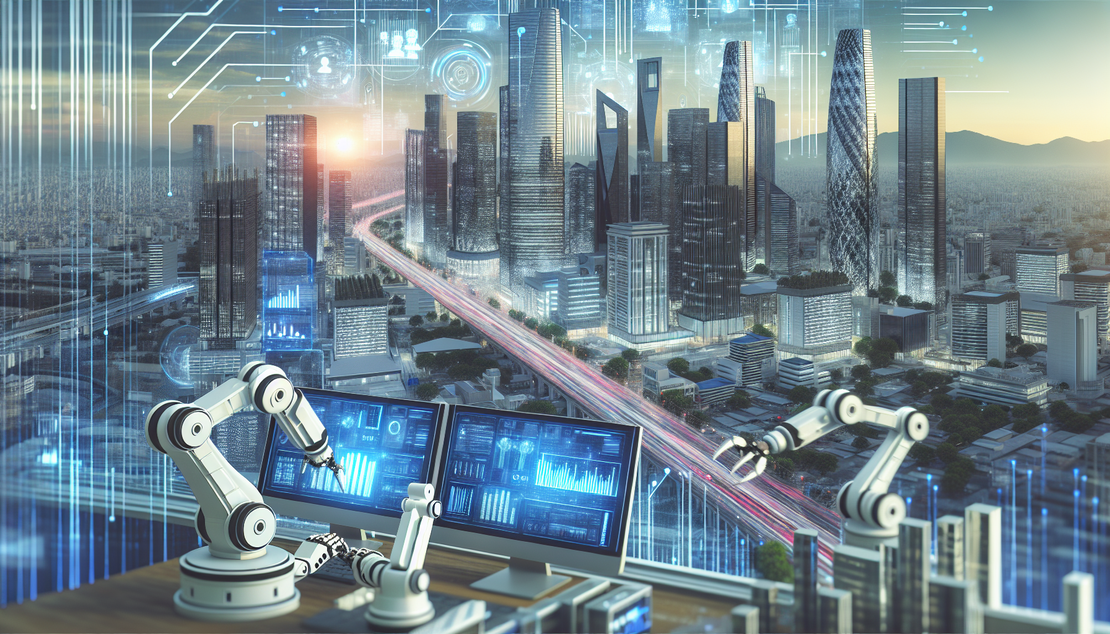
How AI and Automation are Revolutionizing Supply Chain Management
- Rajdeep Barad
- Ai and automation , Supply chain management , Optimize processes , Inventory management
- October 4, 2024
How AI and Automation are Revolutionizing Supply Chain Management
Understanding AI and Automation in Supply Chain Management
In recent years, the integration of Artificial Intelligence (AI) and automation technologies has reshaped the landscape of supply chain management. AI refers to the simulation of human intelligence processes by machines, while automation involves the use of technology to perform tasks with minimal human intervention.
- Definition of AI and automation in the context of supply chain management: AI and automation in supply chain management encompass leveraging technologies such as machine learning, robotics, and predictive analytics to optimize and automate various processes within the supply chain.
- Benefits of AI and automation in streamlining supply chain processes: These technologies offer enhanced efficiency, real-time insights, improved decision-making capabilities, and cost savings by automating repetitive tasks and providing data-driven recommendations.
- Challenges in implementing AI and automation in supply chain management: Challenges include data integration issues, high initial costs, resistance to change, and the need for specialized skills to manage and interpret AI-driven insights.
- Real-world examples of successful AI and automation integration in supply chains: Companies like Amazon, Walmart, and UPS have effectively integrated AI and automation to optimize inventory management, enhance delivery routes, and improve demand forecasting accuracy.
Pro Tip: When implementing AI and automation in supply chain management, start by focusing on specific pain points or processes that can benefit the most from automation to showcase quick wins and gain buy-in from stakeholders.
Key Applications of AI and Automation in Supply Chain Management
- Inventory management and demand forecasting: AI algorithms can analyze historical data, market trends, and external factors to predict demand accurately, leading to optimized inventory levels and reduced stockouts.
- Route optimization and logistics planning: Automation tools can determine the most efficient delivery routes, minimize transportation costs, and improve overall logistics efficiency through real-time data analysis.
- Warehouse automation and robotics: Automated warehouse systems, including robotic pickers and conveyor belts, can streamline order fulfillment, reduce errors, and increase operational speed.
- Risk management and predictive maintenance: AI can proactively identify potential risks in the supply chain, such as disruptions or equipment failures, allowing companies to take preventive actions and ensure operational continuity.
Pro Tip: When selecting AI applications for your supply chain, prioritize solutions that address critical pain points or bottlenecks in your existing processes to maximize the impact of automation on overall efficiency.
Benefits of Implementing AI and Automation in Supply Chain
- Improved efficiency and accuracy in decision-making: AI algorithms can analyze vast amounts of data quickly and provide actionable insights, enabling better decision-making and resource optimization.
- Reduction in operational costs and lead times: Automation leads to reduced manual labor requirements, decreased error rates, and faster order processing, resulting in cost savings and improved delivery times.
- Enhanced transparency and visibility across the supply chain: AI solutions offer real-time monitoring capabilities, traceability of goods, and visibility into supply chain processes, fostering transparency and accountability.
- Scalability and flexibility to adapt to changing market demands: Automated systems can easily scale to accommodate fluctuating market demands, customer preferences, and supply chain complexities, ensuring agility and responsiveness.
Pro Tip: Implementing AI and automation in the supply chain requires a strategic approach to ensure alignment with business goals and a clear understanding of the expected benefits, both in the short and long term.
Challenges and Limitations of AI and Automation in Supply Chain
- Data security and privacy concerns: The use of AI in supply chain management raises data security risks, including potential breaches, data leaks, and privacy compliance issues that need to be carefully addressed.
- Integration issues with legacy systems: Compatibility issues between existing legacy systems and new AI technologies can pose challenges during implementation, requiring comprehensive integration strategies.
- Initial investment and ROI considerations: The upfront costs of implementing AI and automation technologies, coupled with the time required to realize a return on investment, can be barriers for organizations with budget constraints.
- Impact on workforce and potential job displacement: Automation may lead to workforce displacement or necessitate reskilling of employees to operate and manage AI-driven systems, requiring proactive change management strategies.
Pro Tip: Prioritize data security measures when implementing AI in the supply chain by establishing robust encryption protocols, access controls, and regular security audits to safeguard sensitive information and maintain compliance.
Best Practices for Successfully Implementing AI and Automation
- Collaboration between IT and supply chain teams: Foster collaboration between IT specialists and supply chain experts to ensure seamless integration of AI technologies and alignment with operational goals.
- Investing in employee training and upskilling: Provide training programs and upskilling opportunities for employees to acquire the necessary skills to operate AI systems effectively and leverage automation tools optimally.
- Starting with pilot projects and scaling gradually: Begin with small-scale pilot projects to test AI solutions, gather feedback, and refine processes before scaling implementation across the entire supply chain network.
- Continuous monitoring and evaluation of AI and automation performance: Regularly monitor the performance of AI systems, analyze key metrics, and solicit feedback from stakeholders to identify areas for improvement and ensure long-term success.
Pro Tip: Establish clear KPIs and success metrics before implementing AI and automation initiatives to track performance, measure ROI, and demonstrate the impact of these technologies on supply chain efficiency and overall business outcomes.
Ready to transform your digital vision?
Get in touch with us to explore how our cutting-edge solutions can elevate your business to new heights. Contact us today!
Get in Touch


